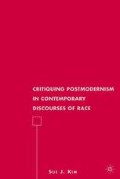Abstract
Reginald Scot was probably the first English writer to use the term “witchmonger.”1 He used it, in fact, in the title of his work, The discouerie of witchcraft, Wherein the lewde dealing of witches and witch-mongers is notablie detected (henceforth Discoverie of Witchcraft). This neologism suggests the critical heart of his project. He is a skeptic, and he is responding to what he sees as the selling of witchcraft by Continental demonologists. Through his often sarcastic and emotive rhetoric, he fashions himself as engaged in an exasperating power struggle with authorities whose motivations are both mysterious and suspect. He is explicitly interested in discovering, or uncovering, the reasons for the witchcraft trials and accusations that circulated around him when he produced his treatise in 1584. The late Elizabethan period, in addition to producing the intensely Ovidian literary works analyzed in previous chapters, also produced this first sustained demonological tract in English, and the simultaneously increased publication of and interest in Ovidian literary texts and demonological writings in England occurred because these two distinct areas of representation were negotiating similar cultural interests. Both Ovidian works and works of demonology explicitly address the fear of the instability of the (usually female) body through figurations or analyses of metamorphosis, both share an interest in the passions of female figures, and both are particularly invested in launching challenges to authority, whether that authority is, in literature, a tradition such as epic or the moral imperatives of heroic literature that accompany it or, in writings on witchcraft, the judicial, academic, or religious authorities perceived to be responsible for dealing with witches. In addition to influencing conceptualizations of metamorphosis throughout the treatise, Ovid’s Metamorphoses was also instrumental in perpetuating the literary type of the witch—mainly through the figure of Medea—and in that sense this translated classical text directly influenced the constructions of English witches and their fates at the hands of religious and secular authorities.
I have put twenty of these witchmongers to silence with this one question; to wit, whether a witch that can turn a woman into a cat, etc., can also turn a cat into a woman?
—Scot, Discoverie of Witchcraft 5.10
Access this chapter
Tax calculation will be finalised at checkout
Purchases are for personal use only
Preview
Unable to display preview. Download preview PDF.
Notes
Elizabeth Spiller, Science, Reading, and Renaissance Literature: The Art of Making Knowledge (Cambridge: Cambridge UP, 2004) 1.
See also B. J. Shapiro, Probability and Certainty in Seventeenth-Century England: A Study of the Relationships Between Natural Science, Religion, History, Law and Literature (Princeton: Princeton UP, 1983).
For an extensive discussion and analysis of these issues in historical studies of witchcraft, see Diane Purkiss, The Witch in History: Early Modern and Twentieth-Century Representations (London: Routledge, 1996).
James Sharpe, Witchcraft in Early Modern England (Harlow: Pearson Education, 2001) 16–17.
For a fuller discussion, see Sharpe, Instruments of Darkness: Witchcraft in England 1550–1750 (London: Hamish Hamilton, 1996).
See Stuart Clark, Thinking with Demons: The Idea of Witchcraf in Early Modern England (Oxford: Clarendon, 1997).
Sydney Anglo, “Regi-nald Scot’s Discoverie of Witchcraft: Scepticism and Sadduceeism,” The Damned Art: Essays in the Literature of Witchcraft, ed. Sydney Anglo (London: Routledge, 1977).
Katharine Eisaman Maus, “Sorcery and Subjectivity in Early Modern Discourses of Witchcraft,” Historicism, Psychoanalysis, and Early Modern Culture, ed. Carla Mazzio and Douglas Trevor (New York: Routledge, 2000).
Copyright information
© 2009 Cora Fox
About this chapter
Cite this chapter
Fox, C. (2009). Ovidian Witches in Reginald Scot’s Discoverie of Witchcraft. In: Ovid and the Politics of Emotion in Elizabethan England. Palgrave Macmillan, New York. https://doi.org/10.1057/9780230101654_5
Download citation
DOI: https://doi.org/10.1057/9780230101654_5
Publisher Name: Palgrave Macmillan, New York
Print ISBN: 978-1-349-38026-8
Online ISBN: 978-0-230-10165-4
eBook Packages: Palgrave History CollectionHistory (R0)

